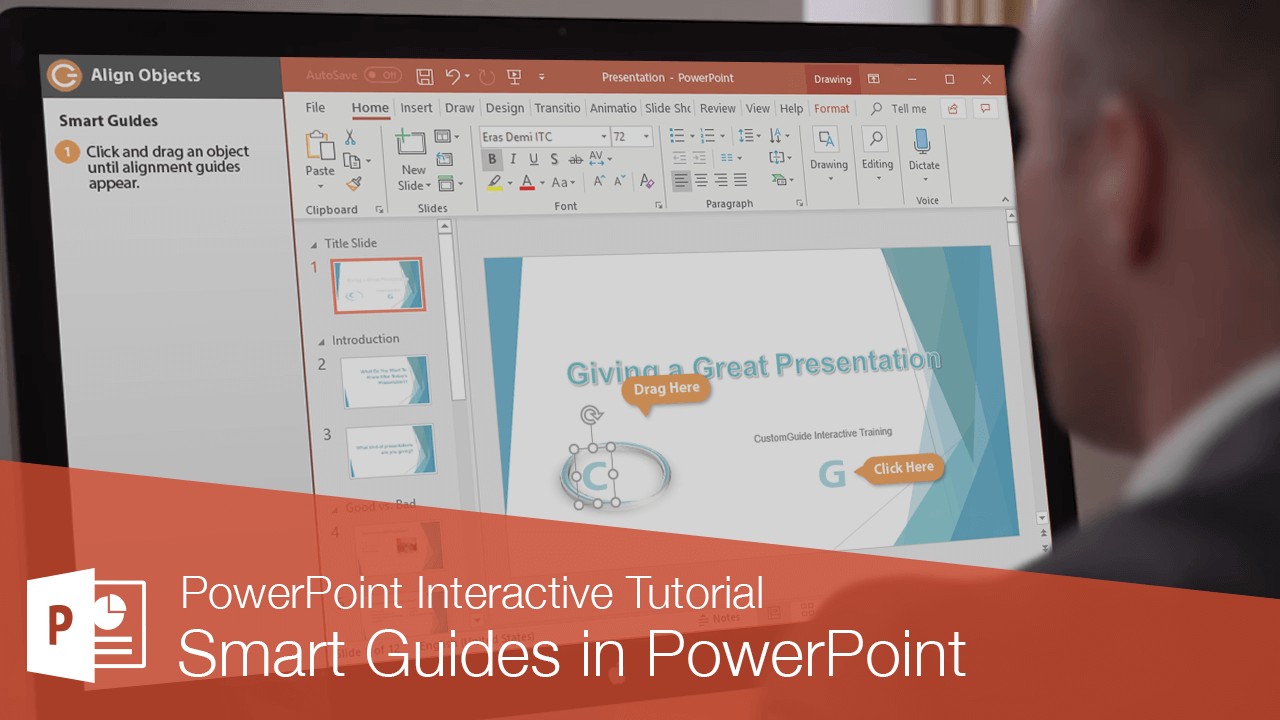PowerPoint’s Smart Guides are a helpful feature, automatically appearing as you move objects to help you align them precisely. While useful, they can sometimes be distracting. This guide provides clear instructions on how to turn off Smart Guides, alongside other alignment tools available in PowerPoint.
Understanding Smart Guides in PowerPoint
Smart Guides are dynamic visual cues that appear when you move objects on a slide, indicating alignment with other objects or the slide’s center. They’re enabled by default, streamlining the process of creating visually balanced presentations.
- By default, Smart Guides are active. When dragging an object, alignment guides will appear when it lines up with other elements on the slide.
Turning Off Smart Guides
Unfortunately, PowerPoint doesn’t offer a direct “turn off” switch for Smart Guides. However, you can effectively disable them by adjusting your PowerPoint settings, here’s how:
-
Navigate to the View tab on the PowerPoint ribbon.
-
Locate the “Show” group.
-
Deselect the Guides checkbox. This will hide both the static guides and the dynamic Smart Guides during object movement.
While this action also removes static guides, it prevents the Smart Guides from appearing while you move objects. If you need to use static guides, this solution might not be ideal. But for those strictly bothered by the dynamic Smart Guides, this workaround proves effective.
Alternative Alignment Options in PowerPoint
Even with Smart Guides disabled, PowerPoint offers several other tools to help you achieve precise alignment:
Align and Distribute Objects
PowerPoint’s “Align” feature offers precise control over object placement.
- Select the objects you wish to align.
- Go to the Format tab (it appears when you select at least one object).
- Click the Align Objects button.
- Choose from alignment options:
- Left: Aligns selected objects to the leftmost object.
- Center: Aligns selected objects to a vertical center line.
- Right: Aligns selected objects to the rightmost object.
- Top: Aligns selected objects to the topmost object.
- Middle: Aligns selected objects to a horizontal center line.
- Bottom: Aligns selected objects to the bottommost object.
Gridlines
Gridlines provide a visual framework for aligning objects, similar to graph paper.
- Go to the View tab.
- Check the Gridlines box to display them. A grid will appear on the slide.
- Select the object you want to align.
- Click and drag the object, using the grid as a reference for precise positioning.
- Uncheck the Gridlines box on the View tab to hide them.
Static Guides
Static guides are movable lines that you can position anywhere on your slide.
- Check the Guides box on the View tab to display them. Horizontal and vertical guides will appear.
- Click and drag the guides to your desired locations.
- Move objects, using the guides as alignment references.
- Hold the Ctrl key and click and drag a guide to create a duplicate.
- Uncheck the Guides box to hide them.
Nudging with Arrow Keys
For small adjustments, use the arrow keys on your keyboard.
- Select the object(s) you want to move.
- Tap the arrow keys to nudge the object into the desired position. This offers granular control over object placement.
Conclusion
While a direct “turn off” switch for Smart Guides isn’t available in PowerPoint, deselecting the “Guides” checkbox in the View tab effectively hides them. Coupled with PowerPoint’s other alignment tools – Align Objects, Gridlines, static Guides, and arrow key nudging – you have a comprehensive toolkit for creating precisely aligned and visually appealing presentations, regardless of whether you choose to use Smart Guides. Choose the method that best suits your workflow and design preferences to maximize efficiency and achieve professional-looking results.
